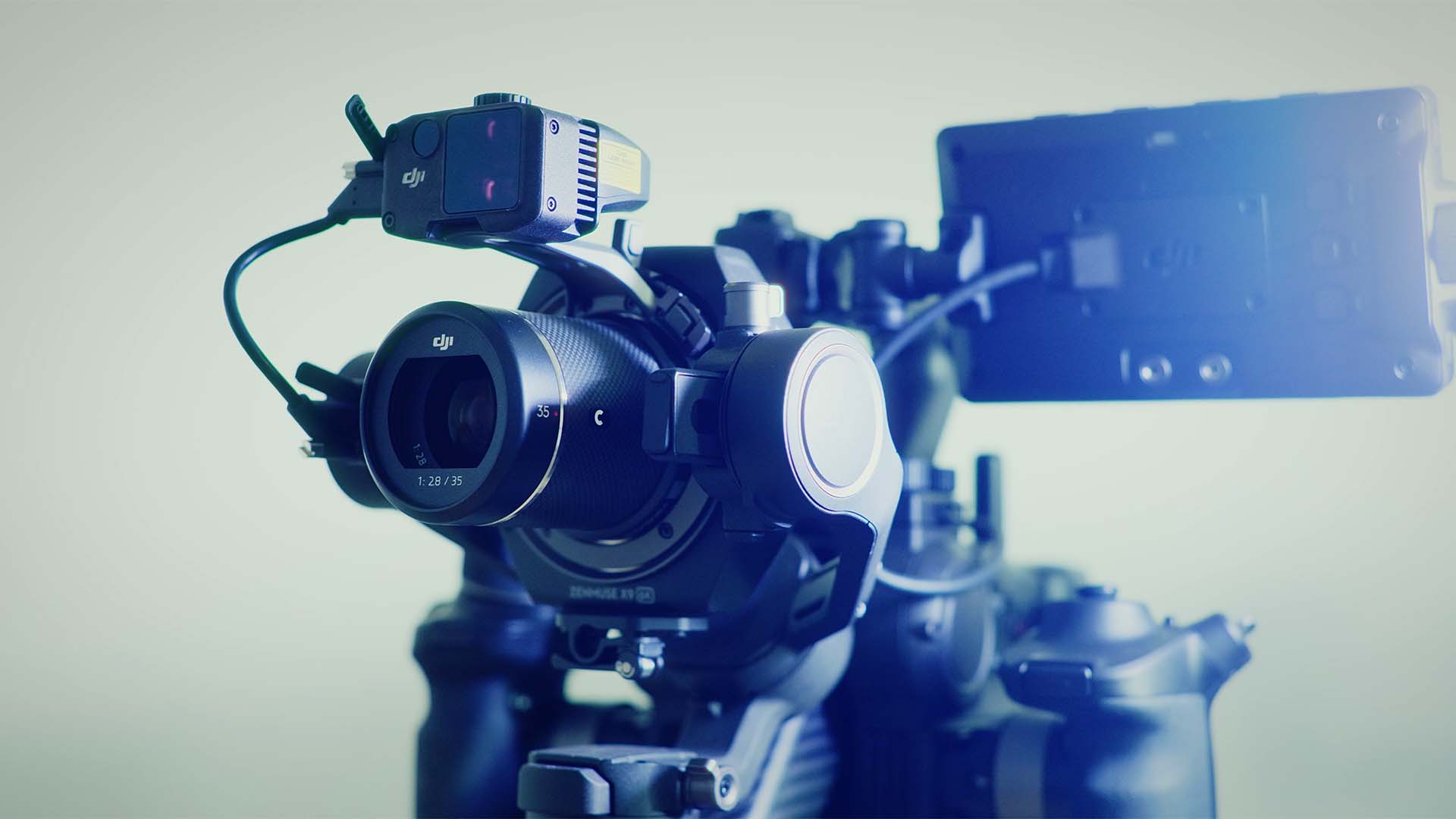
The Ronin 4D from DJI is one of the most unusual cameras in existence. We got our hands on one, and this is our review.
It has to be said that although video cameras, and indeed cameras in general, are getting better each year, there hasn't really been any true innovation for a very long time. Sure, resolutions and frame rates are on an ever-increasing trajectory upwards, but it's hard to pinpoint a device in the last 20 years or so that has come close to turning the entire concept of a camera on its head.
Those with good memories may remember that DJI produced a short film called The Circle a few years ago. If you watched it without knowing what it was shot on, you probably wouldn't have suspected anything was any different from every other film out there. Except The Circle was very different indeed. The entire thing was filmed on a DJI Inspire 2 drone, using it as a fully stabilised cinema camera. When The Circle was made, it set the path for what was to come, and what we have today, the Ronin 4D.
The Ronin 4D is a system that is likely to set in motion an entirely new sub-genre of cameras. Why? The Ronin 4D is the first professional camera system to feature an integrated gimbal stabilisation system. Not only that, but it's a four-axis affair that results in even smoother footage than the more common three-axis devices that are ubiquitous across the industry.
Surprisingly, it hasn't been done before, but if you think about it, only DJI has the intimate gimbal and the camera knowledge to make it happen. On top of that, DJI is a company that has no ties to traditional systems, so it can afford to innovate and try something a bit different. And if my experience of the Ronin 4D is anything to go by, DJI's risk-taking may well have paid off. So let's start from the top.
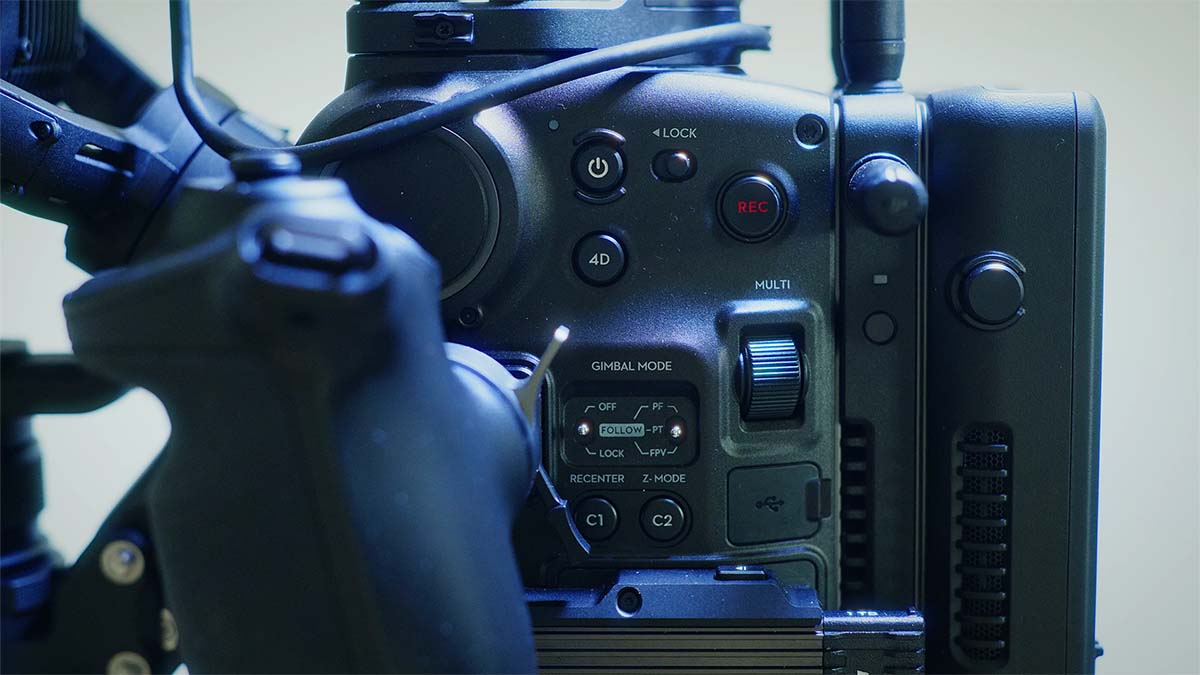
The Ronin 4D's button layout is simple, and easy to operate with gloves on.
First impressions
The Ronin 4D is as well constructed as any other cinema camera in its price range that I have encountered. It's solid, and the buttons have clearly been designed by someone who has used cameras in cold weather wearing gloves! It's a huge plus point for me in a world full of cameras with tiny little switches and a touchscreen-only setup. The LCD monitor on the side of the camera is large, bright, and seemingly very colour accurate. Along its sides are large buttons, finished off with a large control wheel on one side so that all settings can be adjusted physically. There's even a button to turn peaking on and off.
Whilst I still miss the days when most cameras had their essential functions in generally the same place, moving from camera to camera was like driving a car with everything familiar; the button layout on the Ronin 4D is very well thought out.
From an ergonomics perspective, the Ronin 4D is... interesting. The most common way of holding it is by the detachable side handles, which allow directional control over the camera and focus control.
For short operating periods, this is fine, although, on extended shoots, you'll need some sort of support. My arms certainly knew about it after I got home from using it.
Luckily its form factor is such that it shouldn't be too difficult to rig something up to allow suspended support like an Easyrig or a shoulder system. Although with the latter, you might have to use the gimbal in three-axis mode due to the position of the downward-facing sensors for the fourth axis.
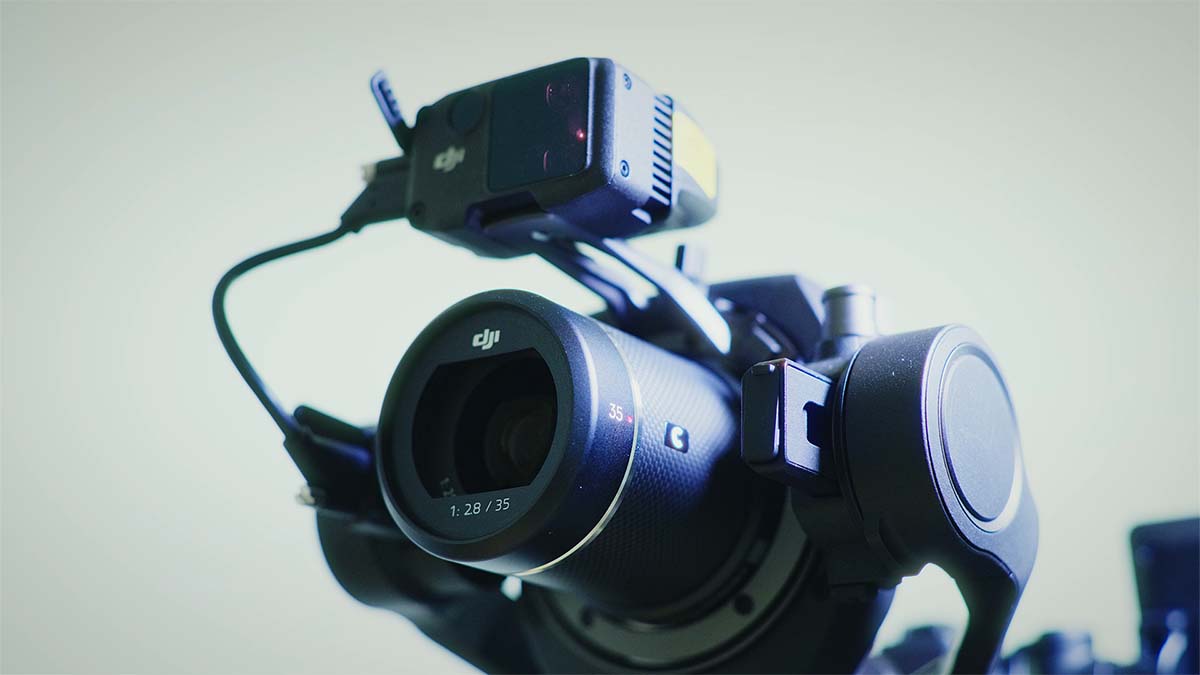
The unique LiDAR focus system is accurate, and makes manual focus easy.
Power-up
The 4D isn't the fastest camera to power up. It takes a very similar amount of time to most gimbals, so it might not be the best match for documentary or other genres where you might need a fast start-up to catch an event. But having said that, for some single operators, the functionality the Ronin 4D offers could be convenient indeed.
That's something that I find fascinating about the camera: It has something to offer small scale one-person operations and crew-based scenarios. The Ronin 4D's AI-based autofocus and tracking system could be put to good use for the solo operator. For crew based productions, there's the ability to mount the side handles onto a wireless monitor and remotely control the camera in all aspects of operation. This is something that would have cost about the same as the camera on its own previously, and now it's here, integrated into an already surprisingly affordable system.
The Ronin 4D is actually a solution to a problem. Excess kit. Rather than taking two sets of batteries and devices, e.g. a camera and a gimbal, you now only need to take one device. Being able to seamlessly switch between operating like a traditional camera and then having the freedom to switch on the gimbal when required is a time-saver, particularly for small shoots with limited crew numbers and/or time.
For example, I can foresee the 4D being very handy for industrial and corporate videos where you might be interviewing a company director or staff one moment in a lit interview style setup. Then you need to go down to the factory floor to get shots there. Going to the gimbal mode with minimal time overhead means you can be ready to capture more dynamic shots at the flick of a switch.
The gimbal system has been designed to make things quick and easy, too. Although you still need basic balancing, it's nowhere near as involved as a standard gimbal. DJI has designed it to cope easily with zoom lenses that extend and contract as the focal length is adjusted within reason. You might occasionally need to do an auto-calibration, but I found that in general, 'gimbal faff' was drastically reduced.
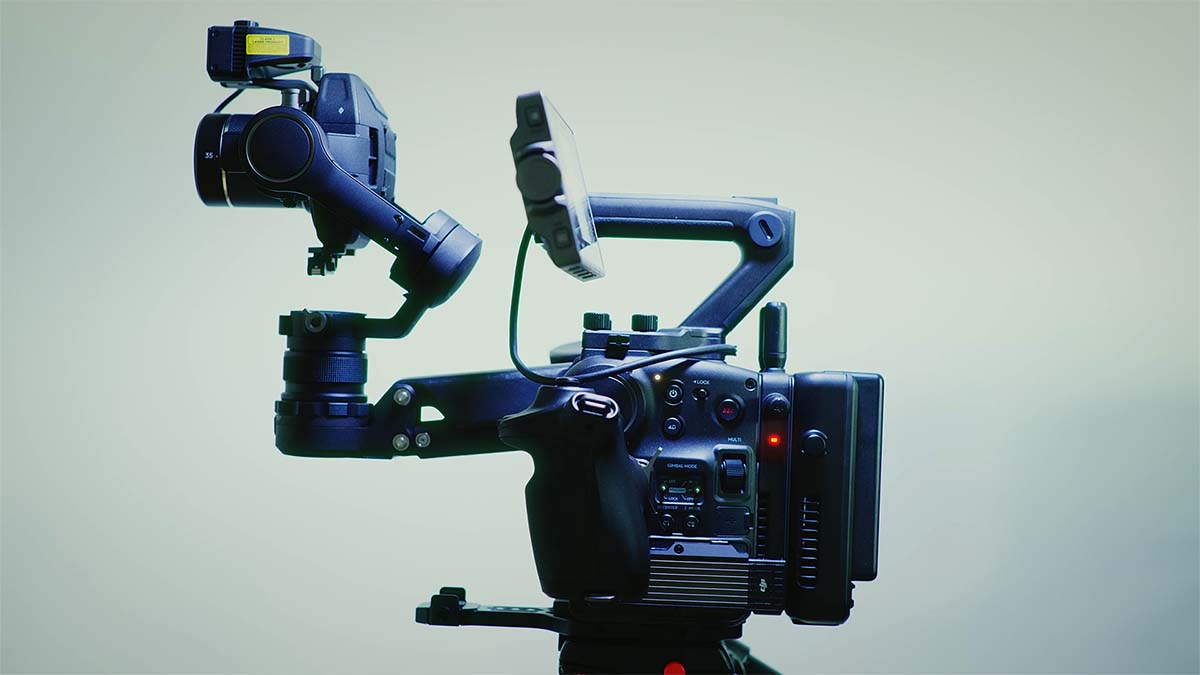
The Ronin 4D is certainly a head turner!
Thoughts on using the Ronin 4D
The LiDAR focusing system is excellent. The graphical representation of what you are focussing on is clear, smooth, and highly responsive. It only works to 10m distance, but that's more than enough for most typical use scenarios. It's possible to drag a box around an object or person and have the camera track them automatically, too. This generally works pretty well, particularly if you correctly set up the response speed. It can get confused or lose lock if they pass behind a tree or other object, and the focusing system does like to then focus on the foreground in such situations. However, the system can be tuned, and I didn't get to fully explore this in the time I had available. If you decide to buy the Ronin 4D, you may need some experimentation to find out what works best. I think that DJI will very likely make significant improvements as they update the firmware, and in fact, some of these quirks may well be ironed out by the time the device is shipping.
I would say that in off the cuff moments it's difficult to highlight people or objects and have it track them. As you can see from the MTB sequence at the beginning of my video review, I didn't nail focus every time. But this was only with a limited time with the camera. Don't read anything into my dodgy focussing skills!
The battery life is impressively good. Whilst I didn't do any scientific timings, I would say that the 2.5hr official runtime was about right. I was using the camera in temperatures of -2 with the system almost permanently switched on with the 4D axis enabled, and I was extremely surprised at how power frugal it was. Even better is that the batteries charge up quickly, in around 1.5hrs.
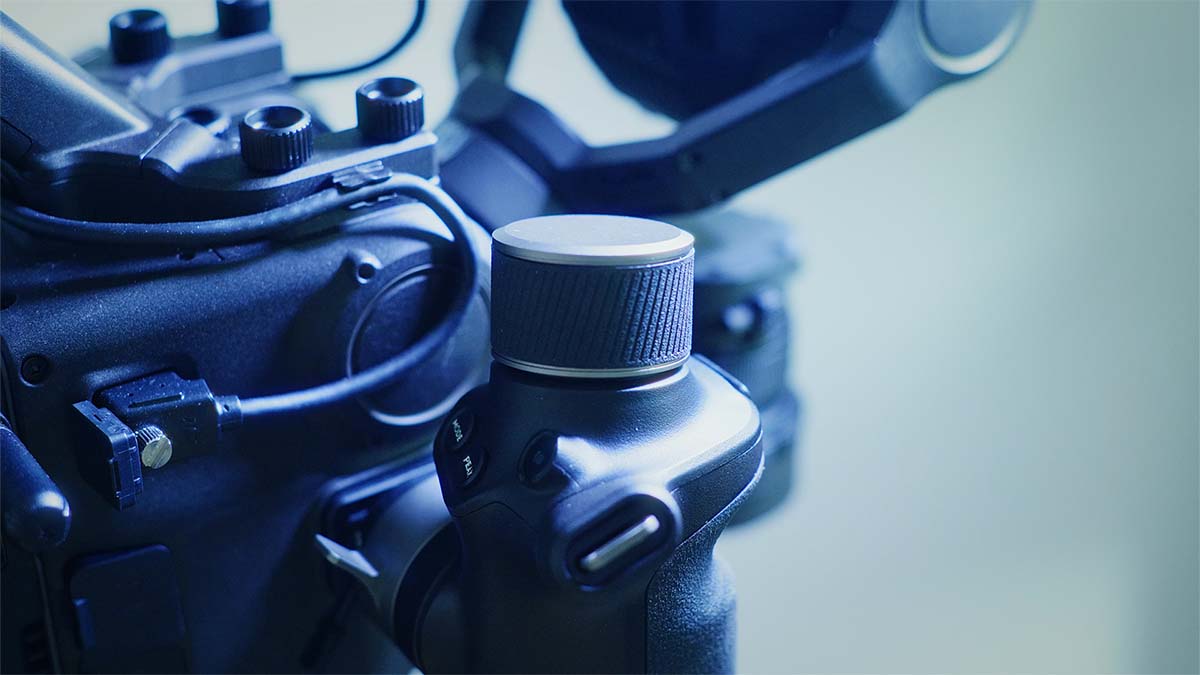
The focus wheel on the right-side detachable handle is smooth and extremely responsive.
Audio
The camera I was supplied with didn't have the XLR audio interface, but it is an option, giving you full size balanced input over two channels. You will need external audio with the Ronin 4D because whilst the internal mics are good, the gimbal motor sound is picked up quite prominently with them.
Speaking of gimbal motor sound, you might be concerned that this will be a problem in interview scenarios. I actually filmed my Zhiyun Crane M3 to-camera pieces with the Ronin 4D and its auto-tracking system, and with an external super-cardioid mic, I had no issues with motor sound. Most people would disengage the gimbal for the majority of interview setups anyway.
My one gripe with the audio is that the volume, as far as I'm aware, needs to be adjusted in a menu rather than via a physical control. Hopefully, if the 4D succeeds and DJI creates a successor, it will add some real audio volume control dials.
Audio is another aspect in which the Ronin 4D offers a tangible advantage over a standard camera on a gimbal or Steadicam. Audio cables interfere with camera balance on traditional stabilisation systems, but that isn't the case with the Ronin 4D. It greatly simplifies things.
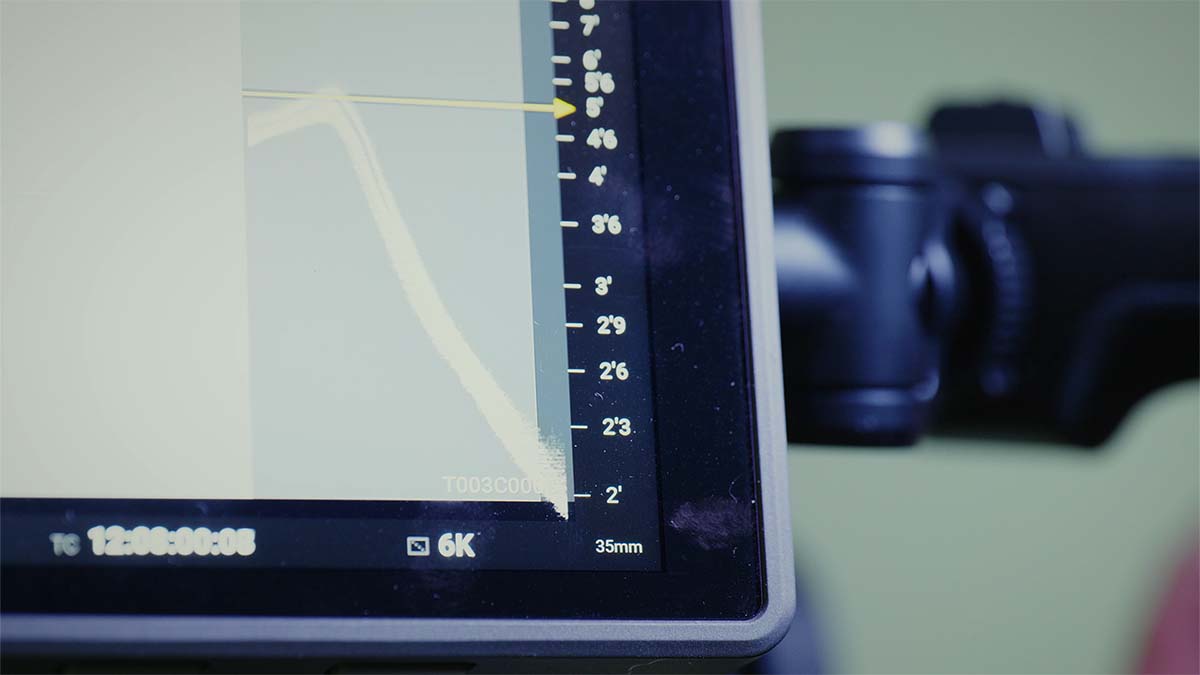
The LiDAR focus assist is easy to read, with a high refresh rate for responsiveness.
Lens choice
The Ronin 4D is a bit more limited than a standard camera regarding focal length. At least if you want to use the gimbal functionality. DJI's official chart lists a 135mm lens as the longest possible, although if you switch the gimbal off and add rails support, you could conceivably use much longer focal lengths.
An excellent feature of the camera is the included focus control motor, which means that even vintage lenses with no electronics can be used with the LiDAR autofocus system and the manual focus control wheel.
The lens mount can be switched out exceptionally quickly to an entirely new system. The camera I was supplied with came with DL, E-mount, and M-mount options. With any luck, we'll see other shallow flange back style full-frame mounts appear as well, such as RF and Z-mount. However, due to size and weight, PL glass will be too much to hope for.
The practicality of shooting with the Ronin 4D continues with the internal ND wheel, with 9-stops of light reduction possible from ND2 to ND512.
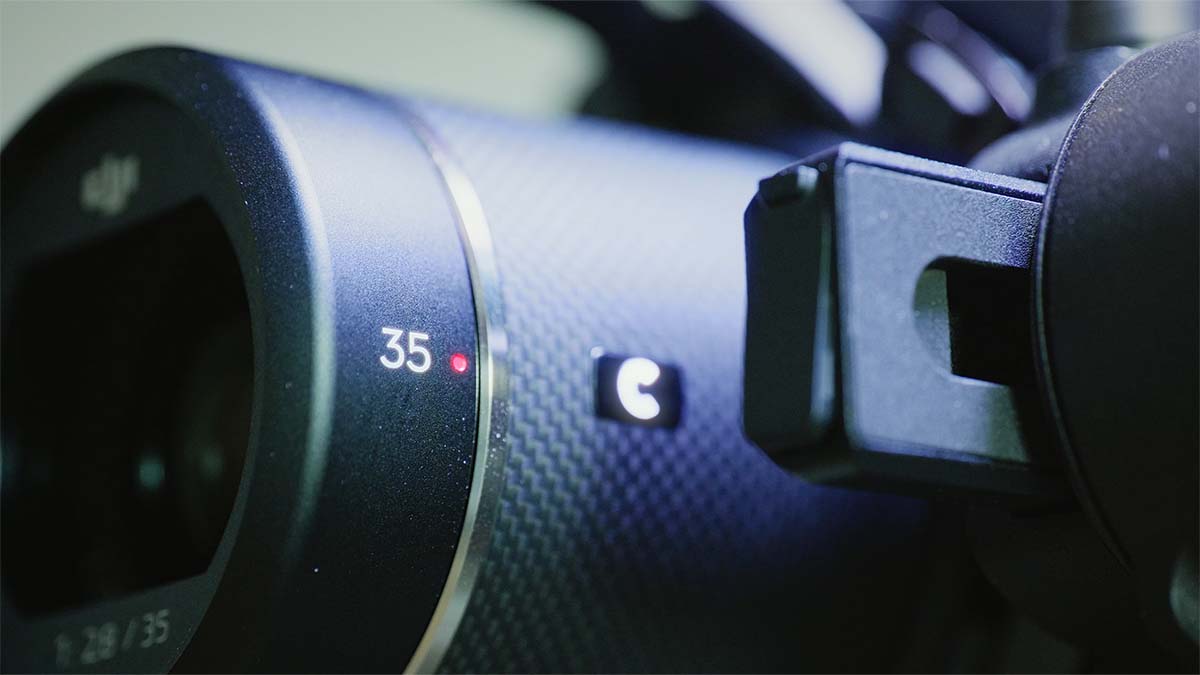
The Ronin 4D caters for different lens mounts, which can be easily switched out.
Wireless monitoring and control
Another fantastic feature is the ability to detach the control handles from the side of the camera and attach them to an external wireless monitor. This allows comprehensive remote control over the camera for a second crew member. They can control framing, focus, and start and stop recording with virtually zero latency.
Think about what this means for a moment. To this point, having a monitor and focus system like this would have cost almost the same as the Ronin 4D itself. Now it is available to all budgets. It's filmmaking democratisation at work.
Throughout my time using the camera, I had to remind myself that this is a camera that has a gimbal if you need it. You don't need to use the gimbal all the time, and indeed the system can be made the most of if you remember that. However, I have to admit that the fact that the gimbal function was available meant that I had to go through a period of self-restraint.
Because it is a camera system, it is easy to get into the habit of turning it on and off like any other camera. This can be a problem if you ever lock the gimbal for safety because it means you often find yourself turning the system on with the locks still engaged. Not great.
So eventually, I made a point of switching the gimbal switch off each time I powered down the camera, so the motors didn't try to engage if I forgot to take the locks off.
Image quality
The Ronin 4D is more than just a curiosity piece. It also fulfils the chops when it comes to image quality. The image is natural yet sharp, with absolutely fantastically natural colours and tones. It grades nicely, too, even if you record in ProRes rather than the available ProRes RAW. We have got to a point in time where I would be astonished if I ever encountered a new camera with poor image quality, but the Ronin 4D really does record a particularly pleasant one.
Noise levels are extremely low, and the dual base ISO makes it possible to film in some quite low light levels without noise penalty. In addition, the camera can have sharpness and noise reduction levels tweaked via a menu for further configuration.
Storage can be to a ProSSD drive, or CFexpress or USB-C SSD. My camera was supplied with the ProSSD option, which struck me as a great design. It's small without being losable, and it comes with a built-in USB-C port so that it can be plugged straight into a computer for quick footage transfer.
Conclusions
The Ronin 4D is an unusual camera, to be sure! However, it serves a real purpose. Sure, it has some ergonomics issues for extended use, but it's nothing that couldn't be solved with a bit of rigging.
Because the Ronin 4D solves some practical issues, combined with its sheer versatility at an incredibly attractive price point, I can see this being a new genre of camera that is here to stay. I think other manufacturers will be keeping a very close eye on how the market performs for it.
It won't suit everyone, but it will suit a lot of people. However, I would recommend renting one when they become available to ensure it does what you need it to. The Ronin 4D isn't a system that I would recommend purchasing blind. You need to spend some time with it and really work through what it gives you. Indeed, I think if you bought it as a secondary camera, you would very likely end up using it a lot more than you think. It may even end up being your primary camera, with the traditional style one being relegated to specialist tasks like long lens work.
My hat goes off to DJI for coming up with this, and I can't wait to see where the road leads.
The Ronin 4D 6K combo is available for pre-order at £5999, while the 8K combo can be reserved for £9499. Currently, the camera is scheduled for availability in February.
For more information about the Ronin 4D, visit DJI's website.
Tags: Production Review Cameras Gimbals


Comments